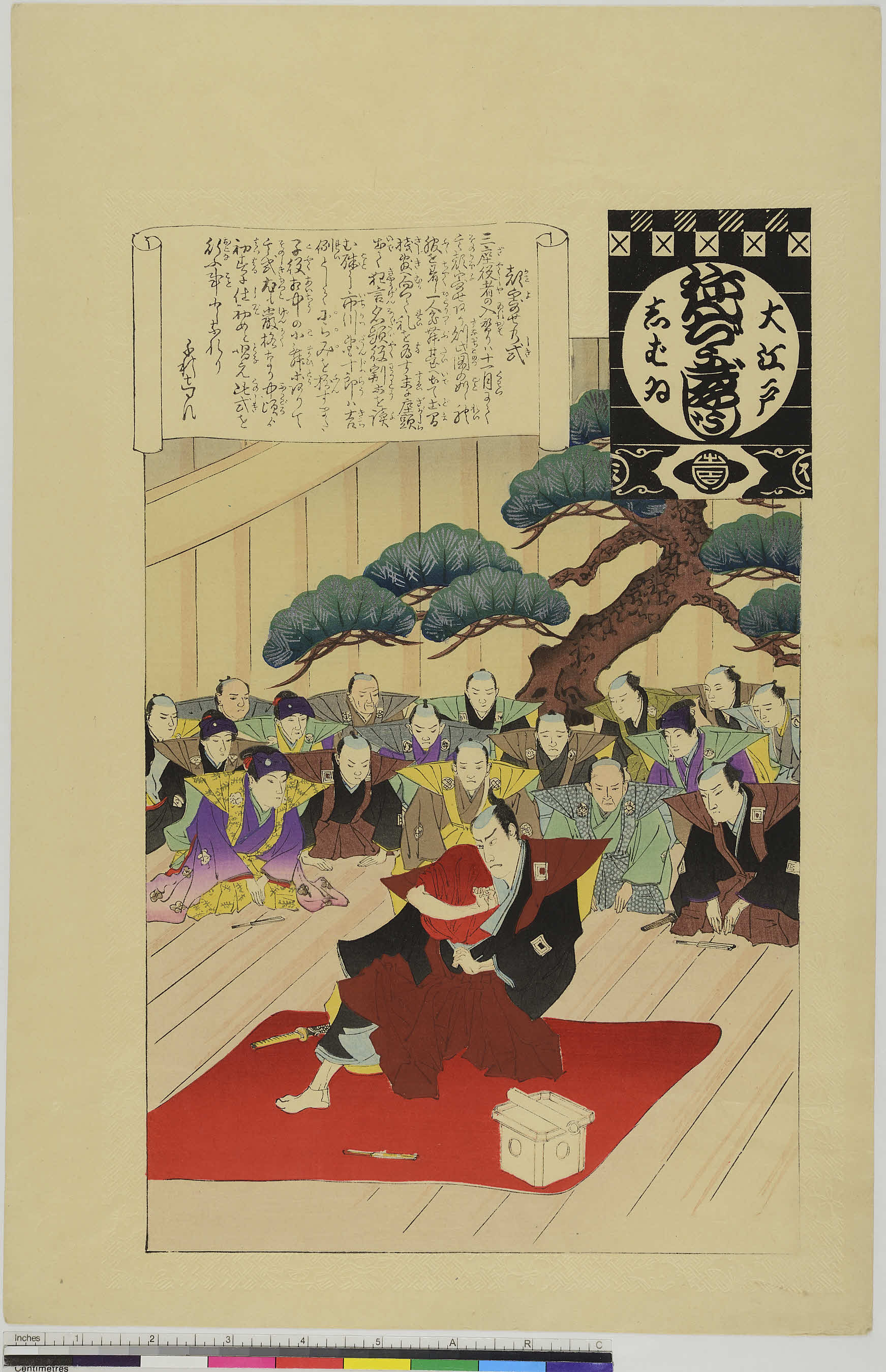B02 Ichikawa Danjūrō's "Nirami"
-
Ō-Edo shibai nenjū gyōji, "The Kaoyose"
Ōban, Colour print
Artist: Adachi Ginkō; Published: Meiji 30 (1897) by Hasegawa Sumi
Ritsumeikan Art Research Center (arcSP02-0410)In the Edo period, the kabuki year began in November with the kaomise production. Even now, the kaomise at Kyoto's Minami Theatre starts on the 30th of November instead of the 1st of December, an insistence on preserving custom. During the kaomise, there is always an item on the program known as the kaoyose, during which the troupe greets the audience and announces the productions for the year ahead. The troupe leader (zagashira) reads aloud the play titles and casts for the kaomise production. Whenever Ichikawa Danjūrō was troupe leader, he would face out to the audience and strike the Genroku mie with his fierce glare (nirami). In spite of his rudeness, the glare was believed to chase evil spirits from the house, and audiences could really feel the experience of attending the beginning of a new theatre season.
Kabuki's annual production cycle gradually fell apart with the end of the Edo Period. Due to the Tenpō Reforms (1841-1843) the kaomise, as the production to showcase new troupe members, was often disallowed. As a result, the kaoyose was postponed until the New Year's production (hatsuharu) under the name shizome.
[Glossary]
Doma、Sajiki、Zagashira、Nadai、Koyaku、Ainchu、Shizome、Kaomise[Related Topics]
「役者の親玉」 -

- 投稿日:
- by 8P
- カテゴリ: B Front and Back of Kabuki Stage
- [編集]